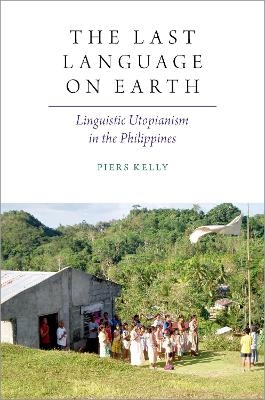
The Last Language on Earth
Oxford University Press Inc (Verlag)
978-0-19-750992-0 (ISBN)
Through written and oral accounts, Eskaya people have represented their language as an ancestral creation derived from a human body. Reinforcing this traditional view, Piers Kelly's linguistic analysis shows how a complex new register was brought into being by fusing new vocabulary onto a modified local grammar. In a synthesis of linguistic, ethnographic, and historical evidence, a picture emerges of a coastal community that fled the ravages of the U.S. invasion of the island in 1901 in order to build a utopian society in the hills. Here they predicted that the world's languages would decline leaving Eskayan as the last language on earth. Marshalling anthropological theories of nationalism, authenticity, and language ideology, along with comparisons to similar events across highland Southeast Asia, Kelly offers a convincing account of this linguistic mystery and also shows its broader relevance to linguistic anthropology. Although the Eskayan situation is unusual, it has the power to illuminate the pivotal role that language plays in the pursuit of identity-building and political resistance.
Piers Kelly is a linguistic anthropologist whose research centers on the varied uses of writing and graphic codes in non-state societies, especially in West Africa, Southeast Asia, and Australia. He has previously worked as a linguist with the National Commission on Indigenous People, Philippines, and is currently affiliated with the Centre for Australian Studies at the University of Cologne, the Max Planck Institute for the Science of Human History in Leipzig, and the University of New England in Armidale, Australia. He is a co-editor of Skin, Kin and Clan: The Dynamics of Social Categories in Indigenous Australia (ANU Press, 2018).
Maps
Acknowledgments
A Note on Terminology
Prologue
Chapter One: Introduction
What this Book is About
What Pinay Understood About Language
A Language Forgotten, a Language Foretold
PART I: Locating the Eskaya
Chapter Two: Language, Literacy and Revolt in the Southern Philippines
Pre-contact Visayan Literacy
The 'Problem' of Language Diversity in the Colonial and Early
Commonwealth periods (1593-1937)
Shamanic Rebellion and Indigenous Outlaws in Bohol (1621-1829)
Enter the Eskaya (1902-1937)
Chapter Three: Contact and Controversy
First Contact
Media
Institutional Tribehood
A Formal Alliance and a Lost Report
Eskaya Responses and a New Research Agenda
PART II: Language, Letters, Literature
Chapter Four: How Eskayan is Used Today
Bohol in the Visayas
Language use in Bohol
A picture of the Fieldsite
The Spoken and Sung Somains of Eskayan
The Written Domains of Eskayan and Ideologies of Writing
Chapter Five: The Writing System
Writing Eskayan Sounds
Numbers
Script
The Past and Future of Eskayan writing
Chapter Six: Words and Their Origins
Eskayan Grammar
The Lexicon
Sources of Inspiration
Pinay's Lexical Agenda
Chapter Seven: Eskaya Literature and Traditional Historiography
The Origins and Scope of Eskaya literature
Language History in Eskaya Literature: A Summary and Analysis
Discussion
PART III: Insurrection and Resurrection
Chapter Eight: From Pinay to Mariano Datahan (and Back Again)
Datahan and the Origins of the Biabas Encampment
The Return of Militant Cults 1902-1922
Accommodation with the US Regime ca. 1914-1937
Datahan's Final War and Posthumous legacy
Chapter Nine: Eskayan Revealed: A Scenario
The Rise of English in Bohol as a Catalyst for Eskayan
How Pinay's Language was Revealed
Prophecy, Prolepsis and Time Depth
Summary
Chapter Ten: Conclusion: The First Language and the Last Word
Imagining Indigeneity from Above: The View from the Helicopter
The Form of Eskayan and the Identity of Pinay
Imagining Indigeneity from Below: The View from the Village
Regional Parallels
The (Re)invention of Linguistic Tradition
The Future of Eskayan
References
Glossary of Eskayan Terms Used in this Volume
Index
| Erscheinungsdatum | 17.12.2021 |
|---|---|
| Reihe/Serie | Oxford Studies in the Anthropology of Language |
| Zusatzinfo | 47 |
| Verlagsort | New York |
| Sprache | englisch |
| Maße | 236 x 157 mm |
| Gewicht | 476 g |
| Themenwelt | Geisteswissenschaften ► Sprach- / Literaturwissenschaft ► Sprachwissenschaft |
| Sozialwissenschaften ► Ethnologie | |
| Sozialwissenschaften ► Soziologie | |
| ISBN-10 | 0-19-750992-4 / 0197509924 |
| ISBN-13 | 978-0-19-750992-0 / 9780197509920 |
| Zustand | Neuware |
| Informationen gemäß Produktsicherheitsverordnung (GPSR) | |
| Haben Sie eine Frage zum Produkt? |
aus dem Bereich


